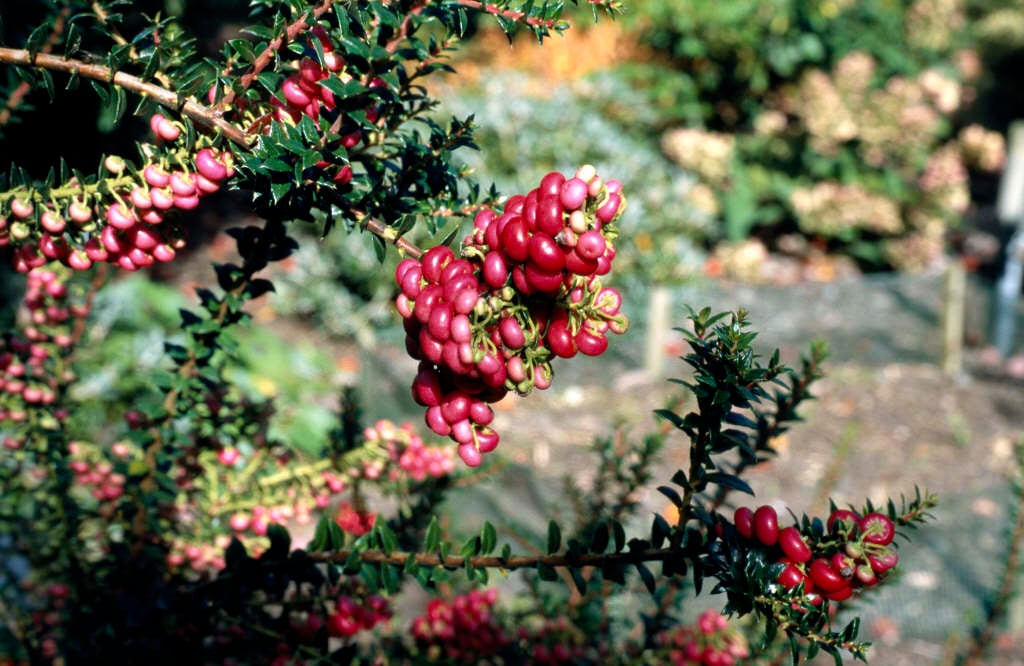Gaultheria mucronata 'Bell's Seedling' (f/m)
prickly heath 'Bell's Seedling'
A small evergreen shrub forming a dense thicket, with small, dark green, prickly-tipped leaves and clusters of small white flowers in late spring and early summer, followed by dark crimson fruits 1cm in width

Buy this plant
Size
Ultimate height
1–1.5 metresTime to ultimate height
5–10 yearsUltimate spread
1–1.5 metresGrowing conditions
Moisture
Moist but well–drainedpH
Acid, NeutralColour & scent
| Stem | Flower | Foliage | Fruit | |
| Spring | White | Green | ||
|---|---|---|---|---|
| Summer | White | Green | ||
| Autumn | Green | Red | ||
| Winter | Green |
Position
- Full shade
- Partial shade
Aspect
South–facing or North–facing or East–facing or West–facing
Exposure
Exposed or Sheltered Hardiness
H6Botanical details
- Family
- Ericaceae
- Native to GB / Ireland
- No
- Foliage
- Evergreen
- Habit
- Suckering
- Potentially harmful
- Fruit are ornamental - not to be eaten. Wear gloves and other protective equipment when handling. Pets: Fruit are ornamental - not to be eaten - see the HTA guide to potentially harmful plants for further information and useful contact numbers
- Genus
Gaultheria are evergreen, often dioecious, shrubs with simple, leathery leaves and small, bell-shaped white or pink flowers, followed by long lasting fleshy fruits in various colours
- Name status
Accepted
How to grow
Cultivation
Grow in moist soils in shade or partial shade
Propagation
Propagate by seed or semi-hardwood cuttings
Suggested planting locations and garden types
- City and courtyard gardens
- Cottage and informal garden
- Gravel garden
- Patio and container plants
- Rock garden
- Low Maintenance
- Banks and slopes
- Flower borders and beds
Pruning
Pests
Generally pest-free
Diseases
May be susceptible to honey fungus in gardens where it is present but insufficient data to determine degree of susceptibility
Get involved
The Royal Horticultural Society is the UK’s leading gardening charity. We aim to enrich everyone’s life through plants, and make the UK a greener and more beautiful place.